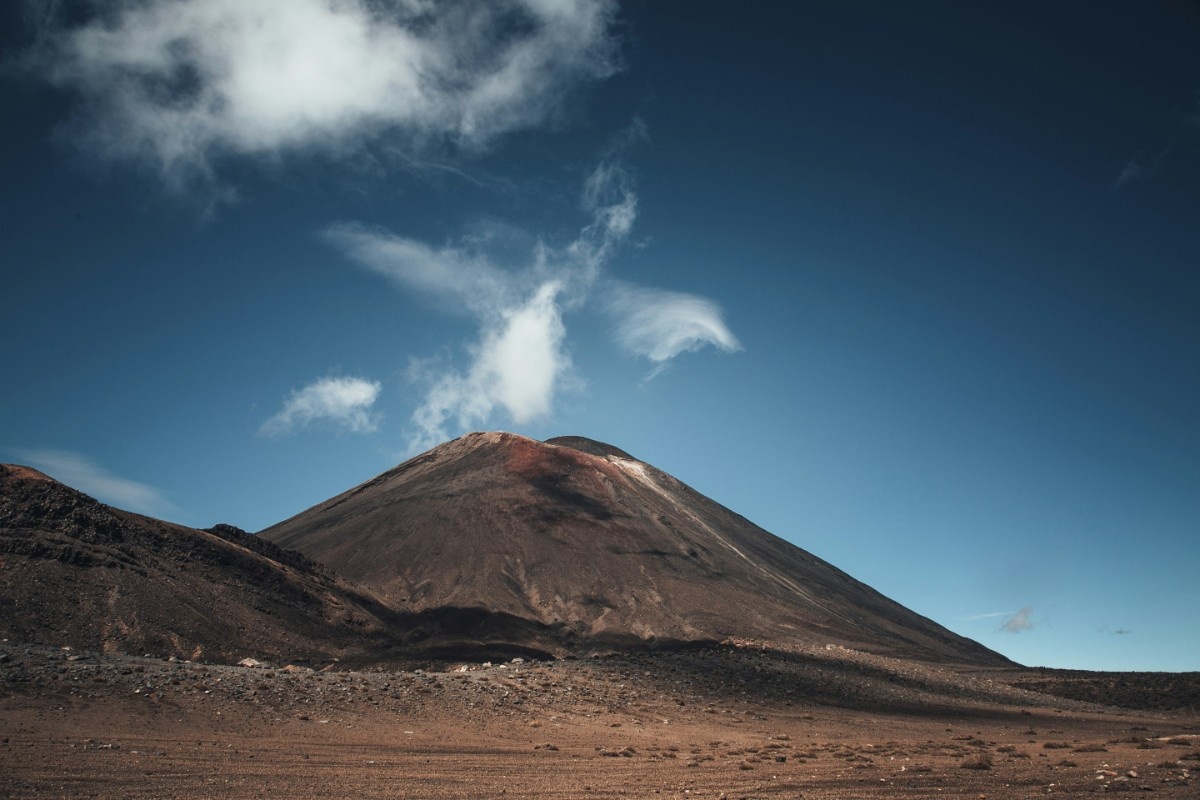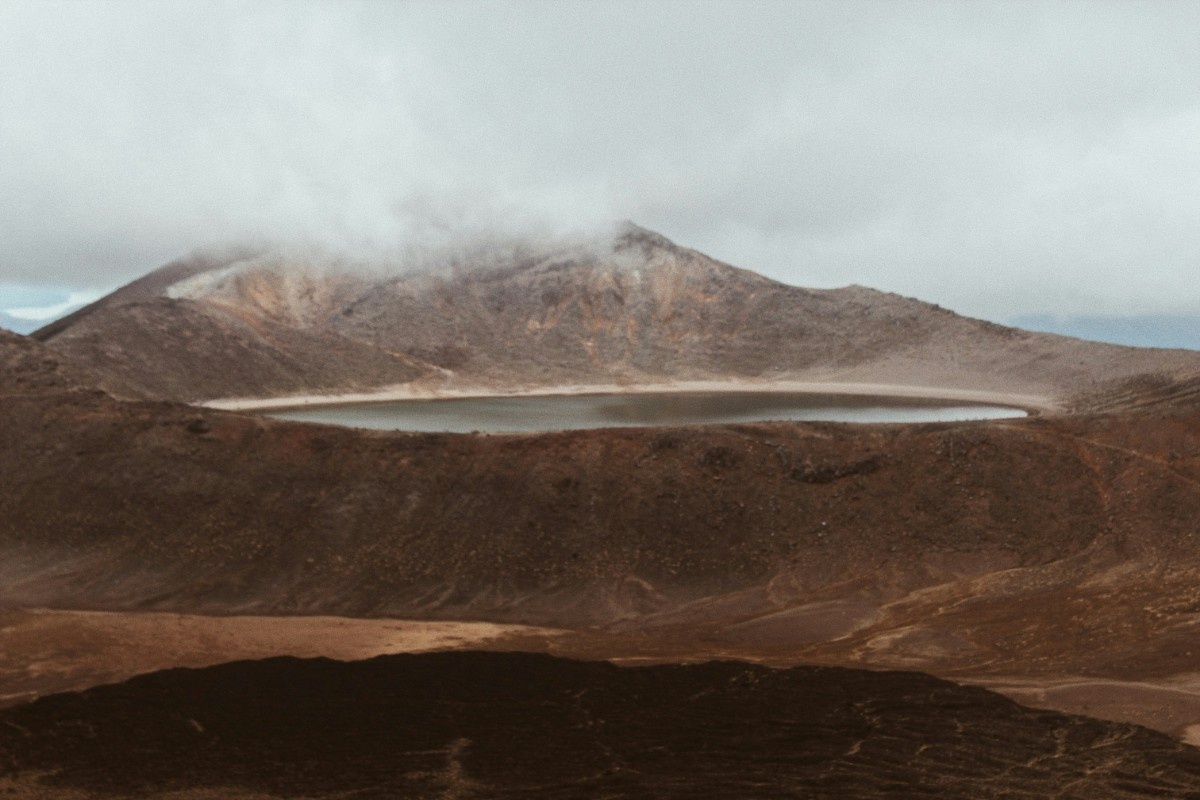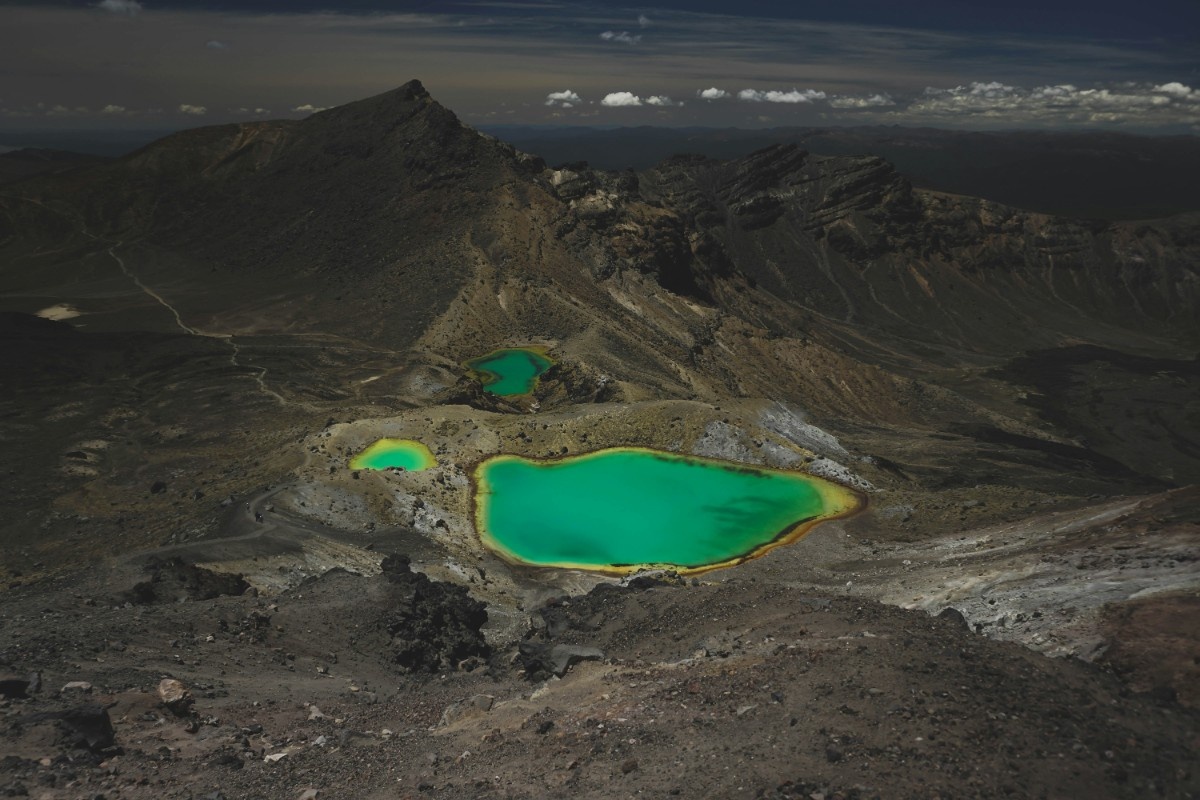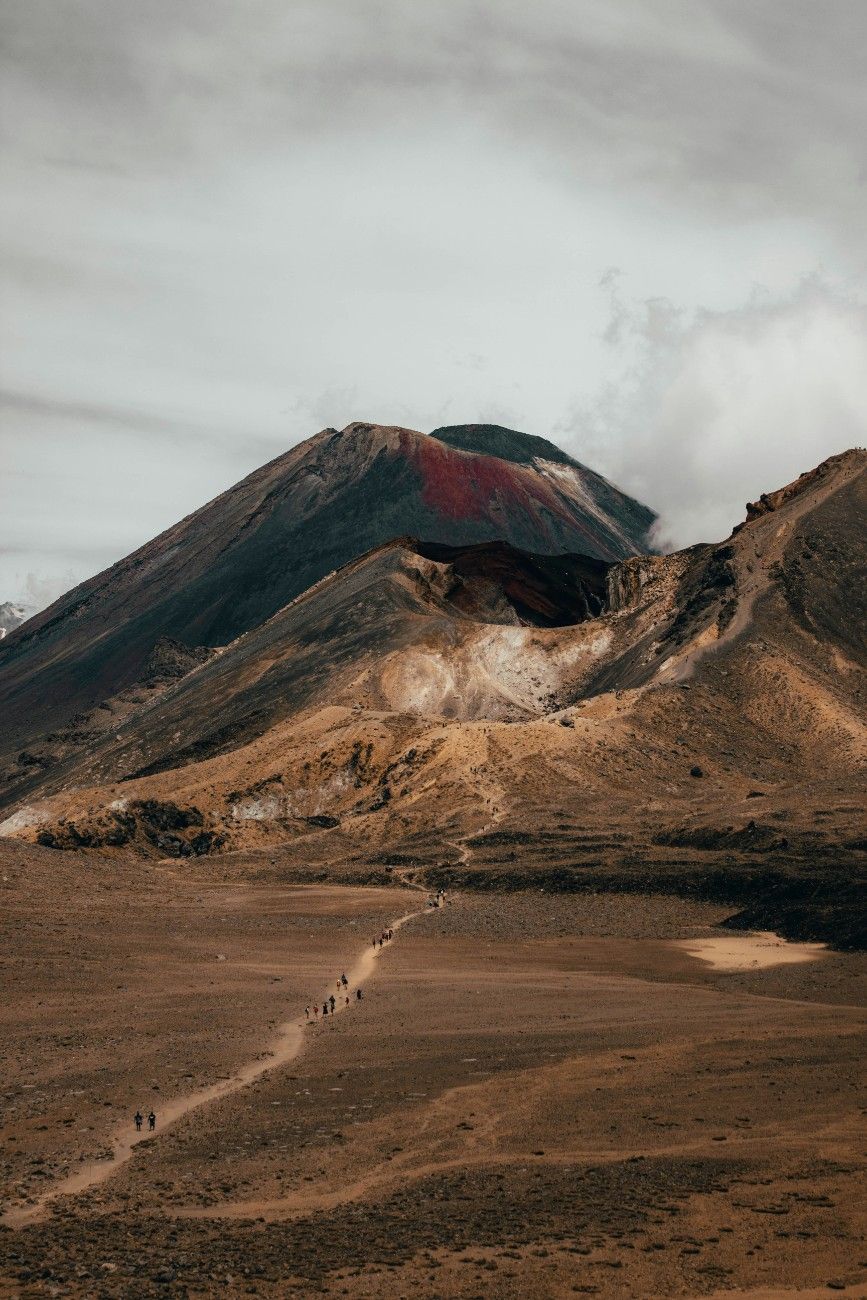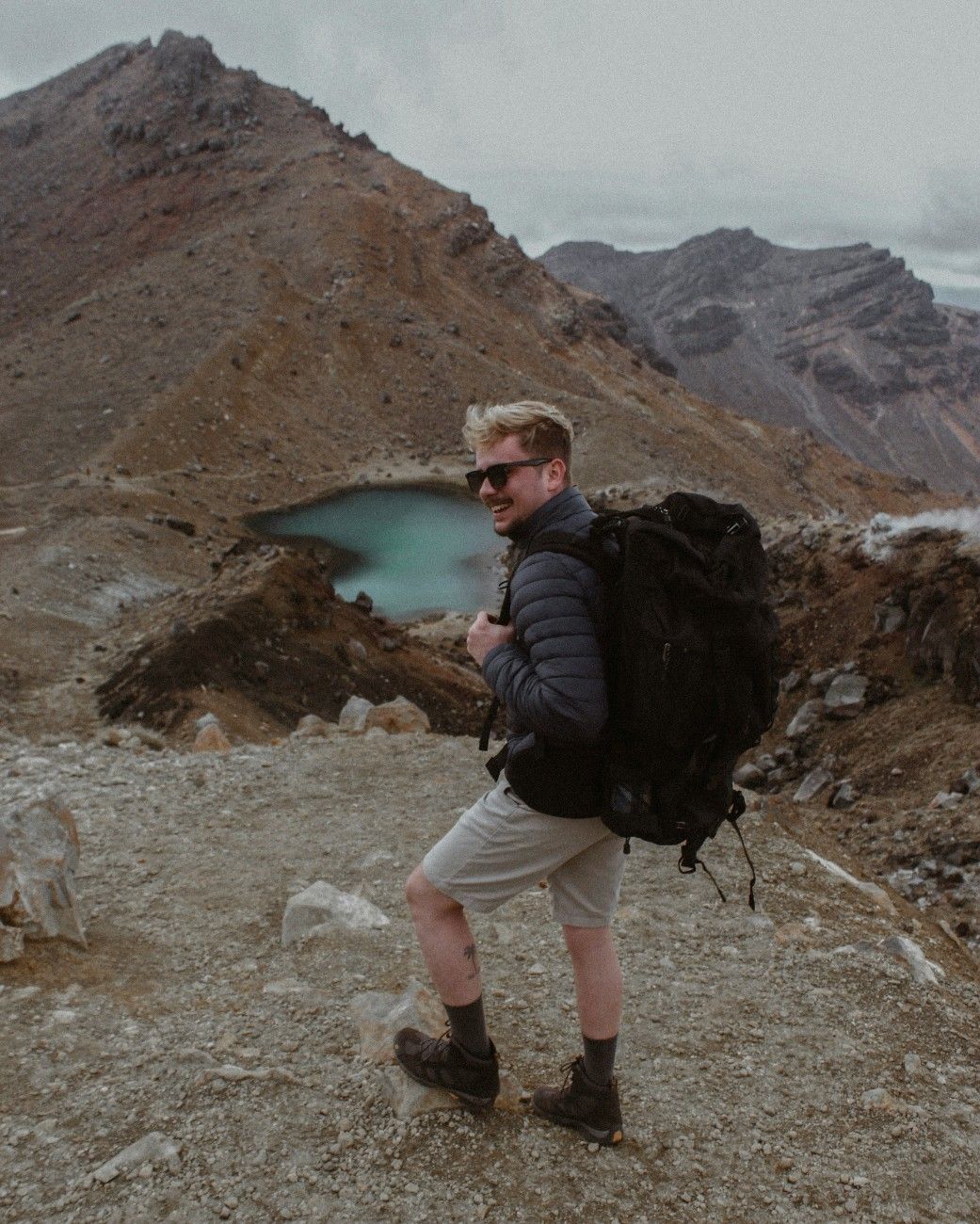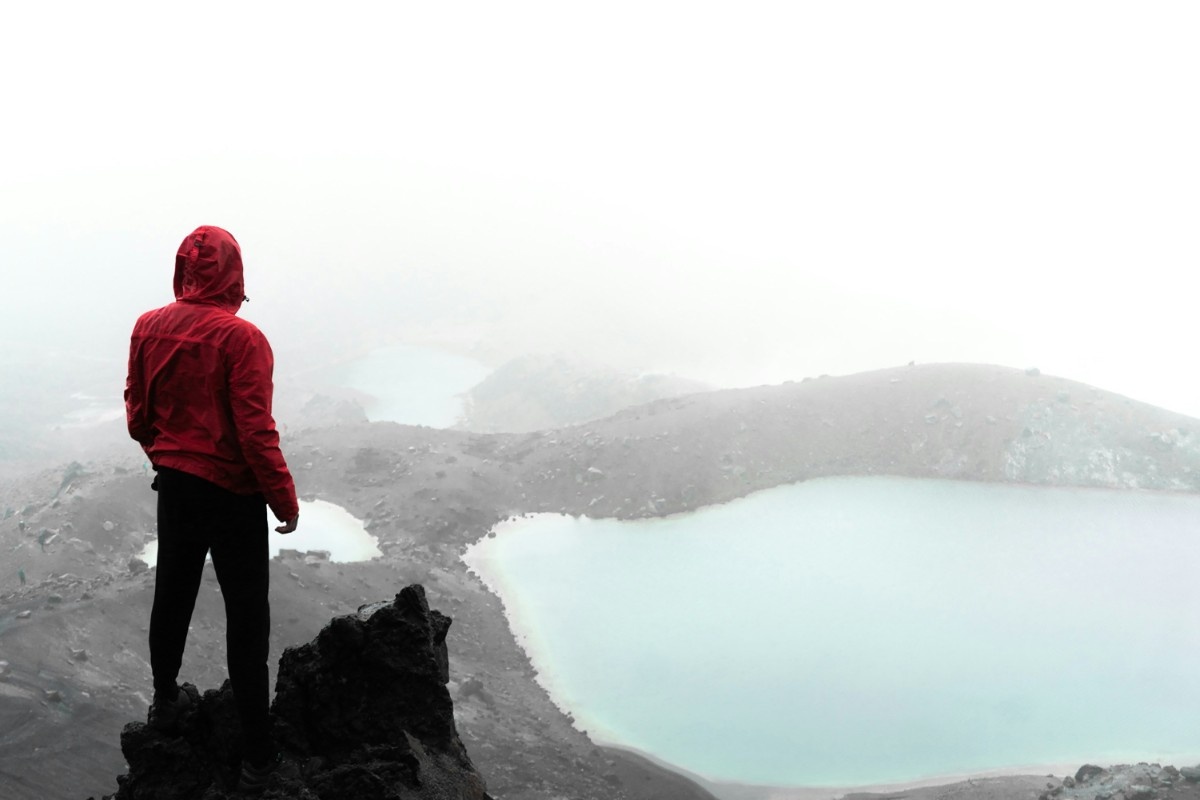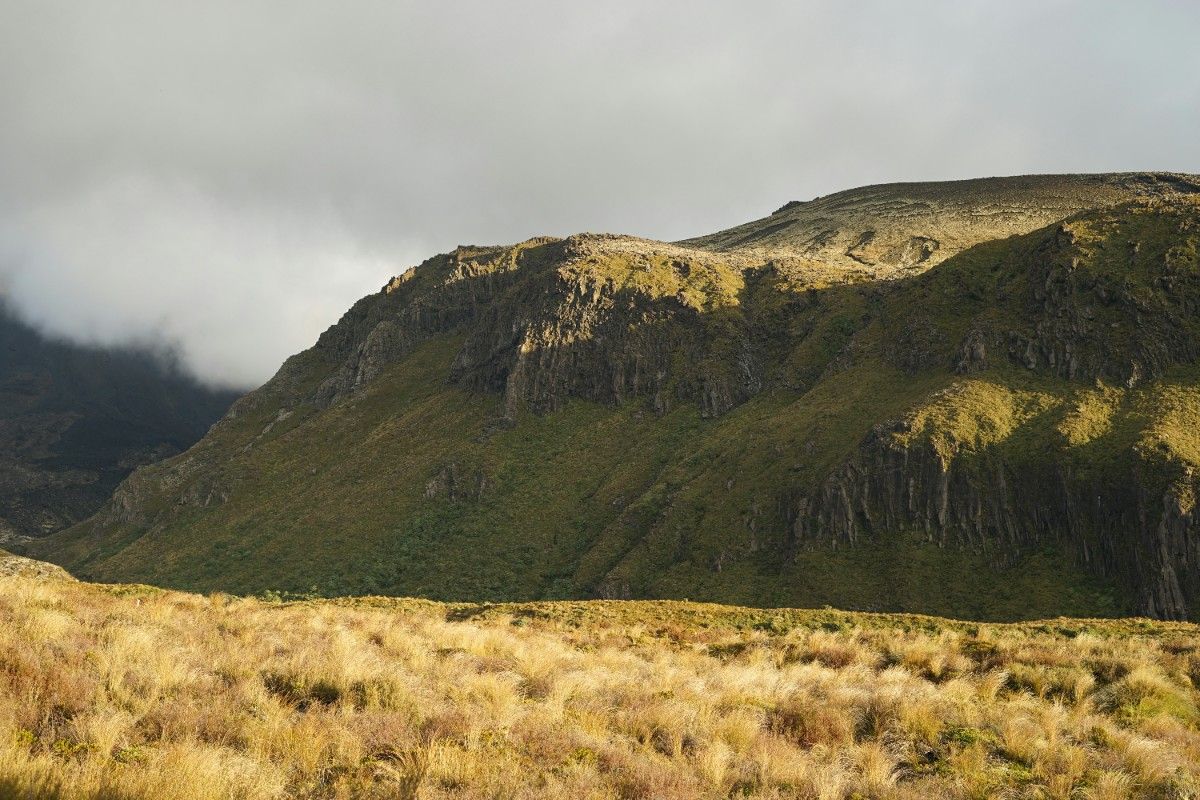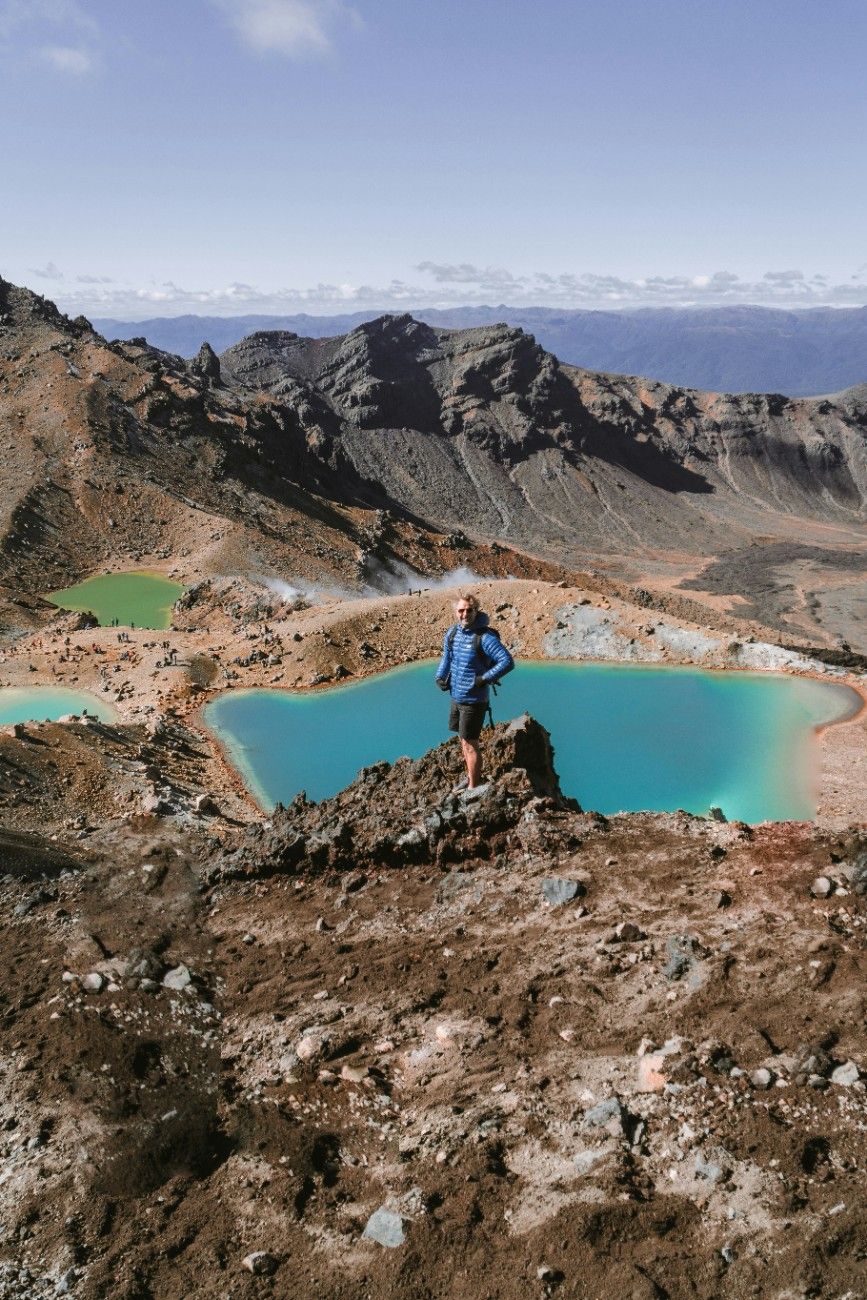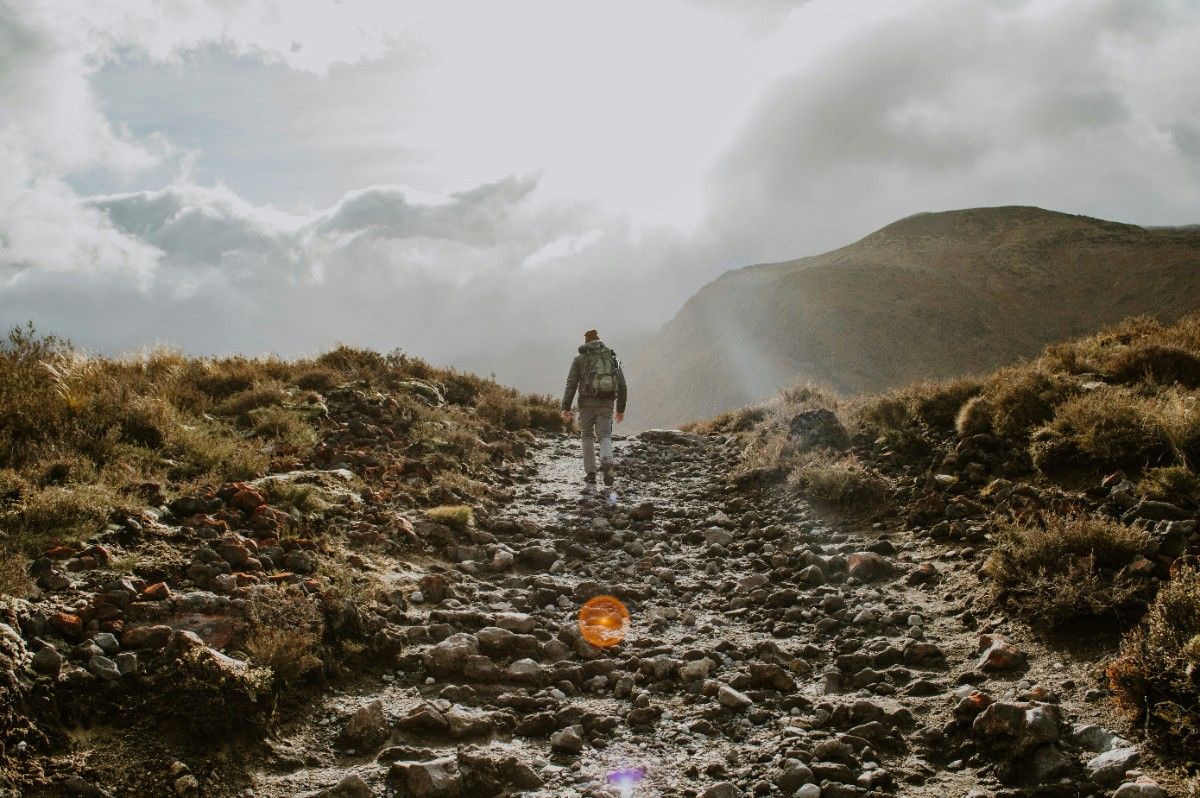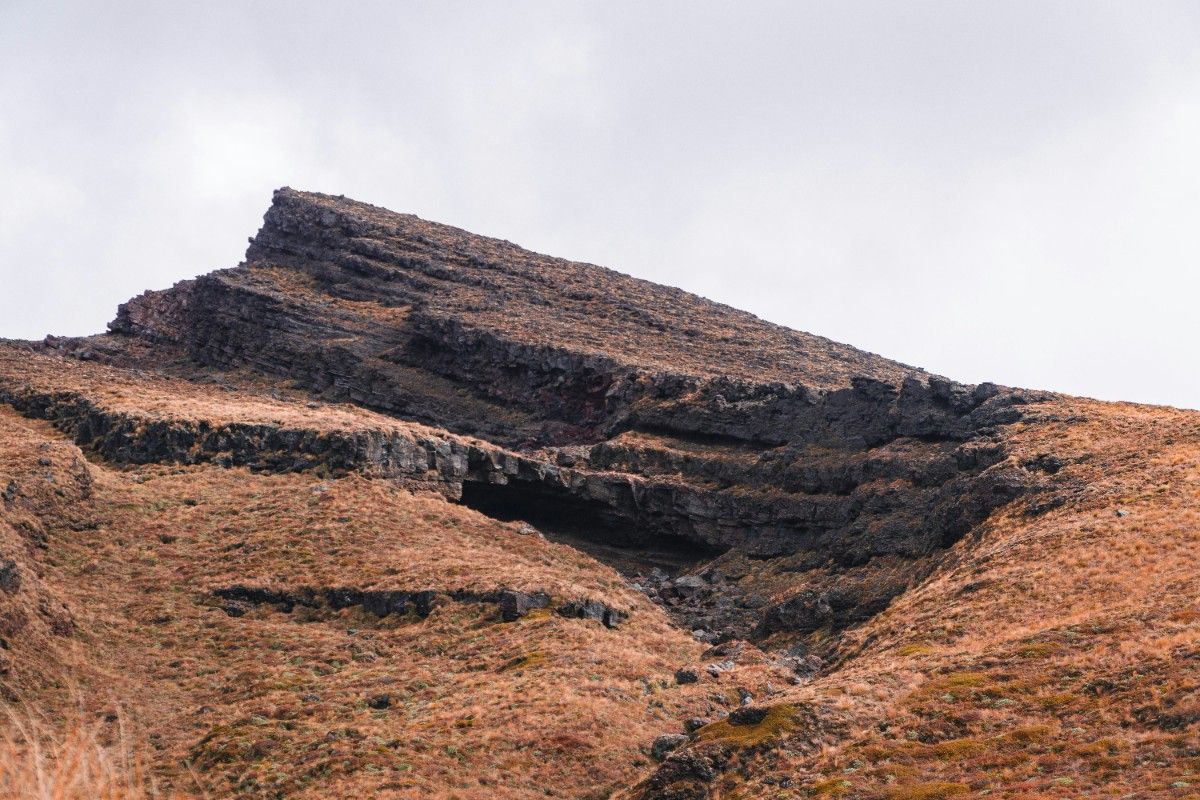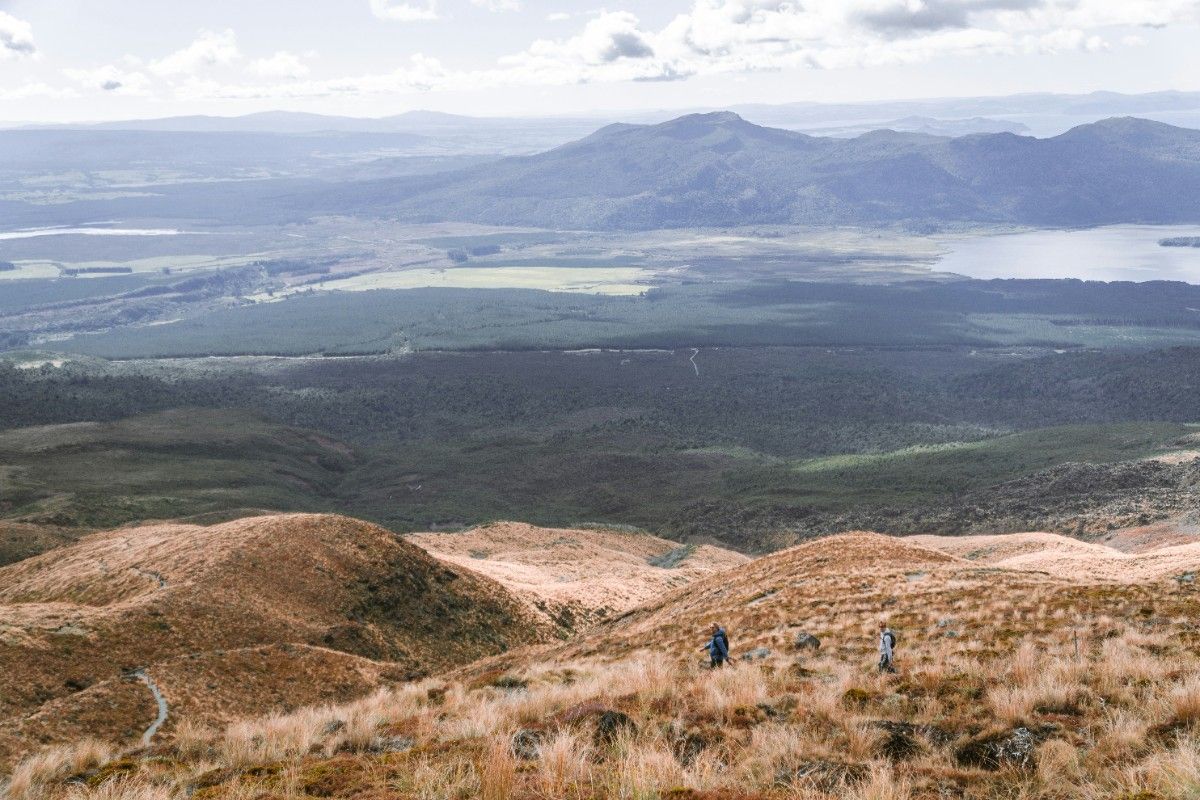Introduction to the Tongariro Alpine Crossing
Overview of the Tongariro Alpine Crossing
The Tongariro Alpine Crossing is a world-renowned hiking trail located in the heart of New Zealand's North Island. Stretching 19.4 kilometres, this spectacular one-day hike takes adventurers through the stunning landscapes of the Tongariro National Park, a dual World Heritage Site recognised for its natural and cultural significance. The crossing is known for its diverse and dramatic terrain, which includes ancient lava flows, steaming vents, and brilliantly coloured lakes. It is often hailed as one of the world's greatest single-day treks, attracting hikers from all corners of the globe who come to experience its raw beauty and challenge themselves in this unique alpine environment.
Highlights of the Tongariro Alpine Crossing
The Tongariro Alpine Crossing offers a multitude of highlights that make it an unforgettable hiking experience. One of the most iconic features of the trek is the Red Crater, a volcanic basin that awes hikers with its vibrant red hues and otherworldly appearance. Another popular attraction is the Emerald Lakes, a set of strikingly coloured lakes that glisten with hues of green and blue, created by minerals leaching from the surrounding volcanic rocks. Hikers also have the opportunity to summit Mount Tongariro and Mount Ngauruhoe, two of the three active volcanoes in the park, and take in the breathtaking panoramic views of the surrounding landscape.
Cultural and Historical Significance
In addition to its natural wonders, the Tongariro Alpine Crossing is also a place of great cultural and historical significance. The Tongariro National Park holds deep spiritual meaning for the local Māori people, who have lived in the region for centuries. The park's three volcanoes – Mount Tongariro, Mount Ngauruhoe, and Mount Ruapehu – are considered sacred, and many Māori legends and stories are associated with these peaks. In 1887, the Māori chief Te Heuheu Tukino IV gifted the sacred volcanoes to the people of New Zealand, forming the basis of the Tongariro National Park. This act of generosity helped to establish the world's fourth-oldest national park and set a precedent for the protection of culturally significant landscapes in New Zealand.
Planning Your Tongariro Alpine Crossing Hike
Best Time to Hike the Tongariro Alpine Crossing
When planning your Tongariro Alpine Crossing hike, it's essential to consider the best time of year to embark on this adventure. The most popular and recommended season to tackle the crossing is during the summer months, from November to April. During this time, the weather is generally more stable, with longer daylight hours and milder temperatures. However, it's crucial to keep in mind that the weather in the alpine environment can be unpredictable and change rapidly, even in summer. It's always a good idea to check the weather forecast before setting out and be prepared for any conditions.
Fitness Requirements and Preparation
The Tongariro Alpine Crossing is a challenging hike that requires a good level of fitness and preparation. The 19.4-kilometre trek involves a significant amount of climbing and descending, with an elevation gain of approximately 800 metres. It typically takes between six to eight hours to complete, depending on your fitness level and the number of stops you make along the way. To ensure a safe and enjoyable experience, it's essential to prepare adequately for the physical demands of the hike. This includes engaging in regular exercise in the weeks leading up to your trek, such as hiking on varied terrain, cardio workouts, and strength training. It's also crucial to wear appropriate hiking gear, including sturdy boots, warm layers, and waterproof clothing, to protect yourself from the elements.
Transportation and Accommodation Options
As the Tongariro Alpine Crossing is a one-way hike, transportation planning is a crucial part of the preparation process. There are several options available for getting to and from the trailheads. One popular choice is to use a shuttle service, which can drop you off at the Mangatepopo Car Park (the starting point) and pick you up from the Ketetahi Car Park (the endpoint). Alternatively, if you have your own vehicle, you can park at one of the car parks and arrange a shuttle to take you to the other end. It's important to note that the car parks can fill up quickly during peak season, so arriving early is recommended.
When it comes to accommodation, there are various options near the Tongariro Alpine Crossing. The nearby towns of National Park Village, Whakapapa Village, and Turangi offer a range of lodging options, from budget-friendly backpackers to more luxurious hotels and lodges. For those seeking a more immersive experience, there are also several camping and hut options within the Tongariro National Park. Staying overnight in the park allows hikers to experience the stunning night skies and get an early start on the crossing to avoid the crowds.
The Tongariro Alpine Crossing Route
Mangatepopo Valley to Soda Springs
The Tongariro Alpine Crossing begins at the Mangatepopo Car Park, situated at an elevation of 1,120 metres. From here, hikers set off on a gentle ascent through the picturesque Mangatepopo Valley, surrounded by tussock grasslands and volcanic rock formations. The trail follows a well-defined path alongside a small stream, leading hikers towards the valley head. After approximately an hour of hiking, you'll reach the Soda Springs, a series of small springs that emit mineral-rich water. This spot serves as a perfect place to catch your breath, hydrate, and take in the serene surroundings before the more challenging sections of the trek.
Devil's Staircase and South Crater
From Soda Springs, the trail begins to steepen as it heads towards the infamous Devil's Staircase. This section of the crossing is a demanding climb, gaining around 300 metres in elevation over a relatively short distance. The well-constructed stairs make the ascent more manageable, but it still requires a good level of fitness and determination. At the top of the Devil's Staircase, hikers are rewarded with stunning views of the surrounding landscape, including Mount Ngauruhoe, known for its resemblance to Mount Doom in the Lord of the Rings films. The trail then levels out as it enters the expansive South Crater, a flat, moon-like basin that offers a moment of respite before the next challenge.
Red Crater and Emerald Lakes
After crossing the South Crater, hikers begin the steep ascent to the Tongariro Alpine Crossing's highest point, the Red Crater. This section of the trail is characterised by loose volcanic scree and requires careful footing. As you climb higher, the views become increasingly spectacular, with panoramic vistas of the Tongariro National Park stretching out before you. Upon reaching the summit of the Red Crater at 1,886 metres, hikers are greeted by an awe-inspiring sight: a deep, red-hued volcanic crater and the glistening Emerald Lakes far below. The descent from the Red Crater towards the lakes is steep and can be slippery, so caution is essential. Once at the lakes, take a moment to appreciate their vibrant colours, caused by minerals leaching from the surrounding rocks.
Blue Lake and Ketetahi Car Park
After passing the Emerald Lakes, the trail continues its descent towards the Central Crater, another expansive volcanic basin. From here, hikers can take a short detour to the stunning Blue Lake, a cold, acidic lake that is tapu (sacred) to the local Māori people. Please respect this site and do not swim or eat near the lake. The final section of the Tongariro Alpine Crossing follows a long, steady descent through alpine meadows and native forest towards the Ketetahi Car Park. This part of the trail offers a chance to reflect on the incredible journey and take in the last views of the volcanic landscape before reaching the end of the 19.4-kilometre trek.
Volcanic Features and Geology of the Tongariro Alpine Crossing
Volcanic History and Formation
The Tongariro Alpine Crossing traverses the Tongariro National Park, a region shaped by intense volcanic activity over the past 300,000 years. The park is home to three active volcanic mountains: Mount Tongariro, Mount Ngauruhoe, and Mount Ruapehu. These volcanoes are part of the Taupo Volcanic Zone, a highly active geothermal area that stretches from White Island to Mount Ruapehu. The volcanoes in the park are classified as composite volcanoes, meaning they are built from layers of lava, ash, and other volcanic debris. The landscape hikers witness along the crossing is a testament to the powerful and dynamic forces that have shaped this region over millennia.
Craters and Calderas
One of the most striking features of the Tongariro Alpine Crossing is the array of craters and calderas hikers encounter along the route. The most prominent of these is the Red Crater, a deep, red-hued volcanic vent that marks the highest point of the trek at 1,886 metres. The intense colour of the crater is due to the high concentration of iron oxide in the rocks, a result of the oxidation of iron-rich lava. Another significant crater on the crossing is the South Crater, a vast, flat basin that was once filled with molten lava. Today, it is a barren, moon-like landscape that offers a unique hiking experience. The Central Crater, located near the end of the trek, is another expansive caldera that showcases the volcanic history of the region.
Lava Flows and Volcanic Rocks
Throughout the Tongariro Alpine Crossing, hikers have the opportunity to observe various types of lava flows and volcanic rocks. The trail passes through ancient lava fields, where the once-molten rock has cooled and solidified into unique formations. Some of these lava flows exhibit distinctive textures, such as the ropey appearance of pahoehoe lava or the jagged, blocky structure of a'a lava. The volcanic rocks encountered on the crossing range from dark, basaltic andesite to lighter-coloured rhyolite. These rocks provide insights into the complex magmatic processes that have occurred beneath the surface over time.
Geothermal Activity and Mineral Deposits
The Tongariro Alpine Crossing also showcases the geothermal activity that is characteristic of the Taupo Volcanic Zone. Hikers can witness steam vents and hot springs at various points along the trail, particularly near the Emerald Lakes and the Ketetahi Springs. These geothermal features are a result of the heat generated by the underlying magma, which warms groundwater and causes it to rise to the surface. The mineral-rich water from these springs has created colourful deposits, such as the vibrant green hues of the Emerald Lakes. These deposits are a testament to the ongoing geothermal processes that continue to shape the landscape of the Tongariro National Park.
Flora and Fauna of the Tongariro Alpine Crossing
Alpine Vegetation and Habitats
The Tongariro Alpine Crossing winds through a diverse range of habitats, each supporting a unique array of plant life adapted to the harsh alpine conditions. As hikers ascend from the Mangatepopo Valley, they pass through lowland native forest dominated by species such as mountain beech and kaikawaka. Higher up, the forest gives way to subalpine shrublands, where hardy plants like the endemic New Zealand tall tussock and the graceful mountain toatoa thrive. Above the treeline, the vegetation transitions to alpine herbfields and tussock grasslands, where delicate flowering plants such as the Mount Tongariro daisy and the snow buttercup add splashes of colour to the rugged landscape.
Unique Alpine Flora
The Tongariro Alpine Crossing is home to a fascinating array of plant species that have adapted to survive in the challenging alpine environment. One of the most iconic plants found along the trail is the endemic New Zealand vegetable sheep, a compact, cushion-forming plant that resembles a woolly sheep from a distance. This slow-growing species plays a crucial role in stabilising the loose volcanic soils and providing shelter for other alpine plants. Another notable plant is the diminutive alpine forget-me-not, which adorns the rocky outcrops with its delicate, blue flowers. Hikers may also spot the resilient snow totara, a small, prostrate conifer that clings to the steep, exposed slopes of the mountains.
Birdlife and Endemic Species
Although the alpine environment of the Tongariro Alpine Crossing may appear harsh and inhospitable, it supports a remarkable diversity of birdlife. One of the most notable species hikers may encounter is the endemic New Zealand pipit or pīhoihoi, a small, ground-dwelling bird that forages among the tussock grasslands. Another iconic bird found in the region is the kea, a highly intelligent and curious alpine parrot known for its mischievous behaviour. Hikers may also hear the haunting calls of the New Zealand falcon or kārearea, a powerful predator that soars over the volcanic landscape in search of prey. The Tongariro National Park is also home to several rare and endangered bird species, such as the blue duck or whio and the North Island brown kiwi, though these are more difficult to spot along the crossing.
Threats and Conservation Efforts
Like many alpine ecosystems around the world, the flora and fauna of the Tongariro Alpine Crossing face a range of threats, both natural and human-induced. Climate change poses a significant risk to the delicate balance of the alpine environment, with rising temperatures and altered precipitation patterns potentially leading to changes in species composition and distribution. Introduced predators, such as stoats and possums, also pose a threat to native birdlife, particularly ground-nesting species like the kiwi. To address these challenges, the Department of Conservation (DOC) and local Māori communities work together to implement various conservation measures, such as predator control programs and habitat restoration projects. By raising awareness about the unique and fragile nature of the alpine ecosystem, the Tongariro Alpine Crossing serves as an important platform for promoting conservation and fostering a deeper appreciation for New Zealand's natural heritage.
Māori Culture and History of the Tongariro National Park
Spiritual Significance of the Tongariro Volcanoes
The Tongariro National Park holds immense spiritual significance for the local Māori people, particularly the Ngāti Tūwharetoa iwi (tribe). The park's three main volcanoes – Mount Tongariro, Mount Ngauruhoe, and Mount Ruapehu – are considered sacred ancestors and are deeply intertwined with Māori mythology and cultural identity. According to Māori legend, the high priest Ngātoro-i-rangi, who arrived in New Zealand on the Te Arawa canoe, travelled inland and claimed the volcanoes for his people by lighting a sacred fire upon their summits. The mountains are seen as protectors and guardians of the land, and their presence is integral to the spiritual and physical well-being of the Māori people. As hikers traverse the Tongariro Alpine Crossing, it is essential to respect the cultural significance of the landscape and to treat the mountains with the reverence they deserve.
Māori History and Settlement
The Tongariro National Park and the surrounding region have been inhabited by Māori for centuries, with evidence of settlement dating back to the 14th century. The Ngāti Tūwharetoa iwi, who are the tangata whenua (people of the land) of the area, have a rich history and deep connections to the volcanic landscape. Traditionally, the Māori utilised the resources of the park for hunting, gathering, and spiritual practices. They established a network of trails and seasonal settlements, allowing them to navigate the challenging terrain and adapt to the harsh alpine conditions. The park also served as an important hub for trade and social interaction between different iwi, with the famous "Desert Road" serving as a vital link between the east and west coasts of the North Island. Today, the Ngāti Tūwharetoa iwi continue to play an active role in the management and protection of the Tongariro National Park, working alongside the Department of Conservation to ensure that their cultural heritage is preserved for future generations.
Gifting of the Tongariro National Park
One of the most significant events in the history of the Tongariro National Park was the gifting of the volcanic peaks to the people of New Zealand by the Ngāti Tūwharetoa chief, Te Heuheu Tūkino IV (Horonuku), in 1887. This visionary act of generosity and conservation marked the birth of New Zealand's first national park and laid the foundation for the country's national park system. Te Heuheu Tūkino IV recognised the importance of protecting the sacred mountains and the surrounding landscape for future generations, and his decision to entrust the land to the care of the nation was a powerful symbol of Māori values and stewardship. The gifting of the Tongariro National Park also represented a significant step towards reconciliation and partnership between Māori and Pākehā (European settlers), setting a precedent for the co-management of protected areas in New Zealand.
Cultural Interpretation and Māori-Guided Experiences
For hikers seeking to deepen their understanding of Māori culture and history, the Tongariro Alpine Crossing offers a range of cultural interpretation and Māori-guided experiences. Visitors can choose to embark on guided hikes led by knowledgeable Māori guides, who share stories, legends, and cultural insights about the volcanic landscape and its significance to their people. These guided experiences provide a unique opportunity to learn about Māori traditions, such as the use of medicinal plants, the meaning of place names, and the spiritual practices associated with the mountains. Many of these guided hikes also include a visit to sacred sites and the opportunity to participate in traditional customs, such as the hongi (a traditional Māori greeting) and the haka (a ceremonial dance). By engaging with Māori culture and history through these guided experiences, hikers can gain a deeper appreciation for the rich cultural heritage of the Tongariro National Park and the enduring connections between the Māori people and their ancestral lands.
Safety Considerations and Preparation for the Tongariro Alpine Crossing
Weather and Clothing
One of the most crucial aspects of preparing for the Tongariro Alpine Crossing is understanding the unpredictable and rapidly changing weather conditions in the alpine environment. The weather in the Tongariro National Park can be highly variable, with the potential for strong winds, heavy rain, snow, and extreme temperature fluctuations, even during the summer months. It is essential for hikers to check the weather forecast before setting out and to be prepared for any eventuality. Hikers should dress in layers, with a base layer of moisture-wicking material, an insulating mid-layer, and a waterproof and windproof outer layer. Sturdy, comfortable hiking boots with good traction are also essential, as the terrain can be rough, slippery, and uneven. Other important items include a warm hat, gloves, sunglasses, and sunscreen, as the sun can be intense at high altitudes, even on cloudy days.
Fitness and Physical Preparation
The Tongariro Alpine Crossing is a challenging and strenuous hike, covering 19.4 kilometres and involving a significant amount of elevation gain and loss. It is crucial for hikers to assess their fitness level honestly and to ensure that they are physically prepared for the demands of the trek. In the weeks and months leading up to the hike, it is recommended to engage in regular cardiovascular exercise and strength training, focusing on building endurance and leg strength. Hikers should also practice walking on uneven terrain and gradually increase the distance and intensity of their training hikes to simulate the conditions they will encounter on the crossing. It is important to listen to your body during the hike and to take breaks as needed, staying hydrated and fuelled with energy-rich snacks throughout the day.
Navigation and Communication
Although the Tongariro Alpine Crossing is a well-marked and popular trail, it is still essential for hikers to have basic navigation skills and to carry a map and compass or a GPS device. The weather conditions can deteriorate rapidly, leading to reduced visibility and making it difficult to follow the trail. Hikers should familiarise themselves with the route before setting out and be prepared to navigate in challenging conditions. It is also crucial to carry a fully charged mobile phone and to be aware of the limited mobile phone reception in the park. In case of an emergency, hikers should dial 111 and provide as much information as possible about their location and situation. It is also recommended to carry a personal locator beacon (PLB) or a satellite communication device, which can be used to alert search and rescue services in the event of an emergency.
Hydration and Nutrition
Proper hydration and nutrition are essential for a safe and enjoyable experience on the Tongariro Alpine Crossing. Hikers should carry at least 2 litres of water per person and drink regularly throughout the day to avoid dehydration. It is also important to pack enough high-energy snacks, such as nuts, dried fruit, and energy bars, to keep your body fuelled and maintain stable blood sugar levels. Hikers should also pack a nutritious lunch and take regular breaks to eat and rest, especially during the more strenuous sections of the hike. It is important to be aware of the signs of dehydration and heat exhaustion, such as dizziness, headache, and nausea, and to take appropriate action if these symptoms occur. By staying hydrated and well-nourished, hikers can minimise the risk of illness or injury and ensure that they have the energy and stamina to complete the crossing safely.
Conclusion and Final Thoughts on the Tongariro Alpine Crossing
A Life-Changing Experience
The Tongariro Alpine Crossing is more than just a hike; it is a life-changing experience that offers a unique and profound connection with the natural world. As hikers traverse the stunning volcanic landscape, they are immersed in a realm of raw beauty and primal power, where the forces of the Earth are palpable and awe-inspiring. The crossing challenges both body and mind, pushing hikers to their limits and rewarding them with a sense of accomplishment and personal growth. The moments of quiet reflection, the camaraderie of fellow hikers, and the sheer exhilaration of standing atop an active volcano all contribute to an unforgettable experience that will stay with hikers long after they have completed the trail. The Tongariro Alpine Crossing is a testament to the enduring allure of the great outdoors and the transformative power of nature.
Respecting the Environment and Cultural Heritage
As hikers marvel at the astounding beauty of the Tongariro Alpine Crossing, it is crucial to remember the importance of respecting the environment and the cultural heritage of the region. The Tongariro National Park is a fragile and precious ecosystem, home to unique and endangered species that depend on the careful stewardship of visitors and guardians alike. Hikers should adhere to the principles of Leave No Trace, taking care to minimise their impact on the landscape by staying on designated trails, disposing of waste properly, and respecting the flora and fauna they encounter. Additionally, it is essential to recognise and honour the deep spiritual and cultural significance of the park to the local Māori people, particularly the Ngāti Tūwharetoa iwi. By treating the mountains and the surrounding landscape with reverence and respect, hikers can play a vital role in preserving this natural and cultural treasure for generations to come.
An Invitation to Explore
For those who have yet to experience the majesty of the Tongariro Alpine Crossing, this guide serves as an invitation to embark on an extraordinary journey of discovery and self-discovery. The crossing offers a chance to step outside of one's comfort zone, to challenge oneself physically and mentally, and to forge a deeper connection with the natural world. Whether you are an experienced hiker or a novice, the Tongariro Alpine Crossing has something to offer everyone, from the breathtaking vistas of the volcanic landscape to the rich cultural heritage of the Māori people. So, lace up your boots, pack your backpack, and set out on an adventure that will leave you inspired, humbled, and forever changed by the incomparable beauty of New Zealand's most iconic one-day hike.
A Call to Action
In conclusion, the Tongariro Alpine Crossing stands as a shining example of the power of nature to inspire, challenge, and transform those who seek its wonders. As hikers, we have a responsibility to ensure that this remarkable landscape remains pristine and protected for future generations to enjoy. By educating ourselves about the unique ecology and cultural heritage of the park, by practicing responsible and sustainable hiking practices, and by sharing our experiences and passion with others, we can all play a part in preserving the magic of the Tongariro Alpine Crossing. So, whether you are a seasoned adventurer or a first-time visitor to New Zealand, heed the call of the mountains and embark on an unforgettable journey through one of the world's most breathtaking and awe-inspiring natural wonders. The Tongariro Alpine Crossing awaits, ready to reward those who dare to explore its majestic depths with memories and insights that will last a lifetime.
Related Articles

Let us know you agree to cookies
We use marketing, analytical and functional cookies as well as similar technologies to give you the best experience. Third parties, including social media platforms, often place tracking cookies on our site to show you personalised adverts outside of our website.
We store your cookie preferences for two years and you can edit your preferences via ‘manage cookies’ or through the cookie policy at the bottom of every page. For more information, please see our cookie policy.
